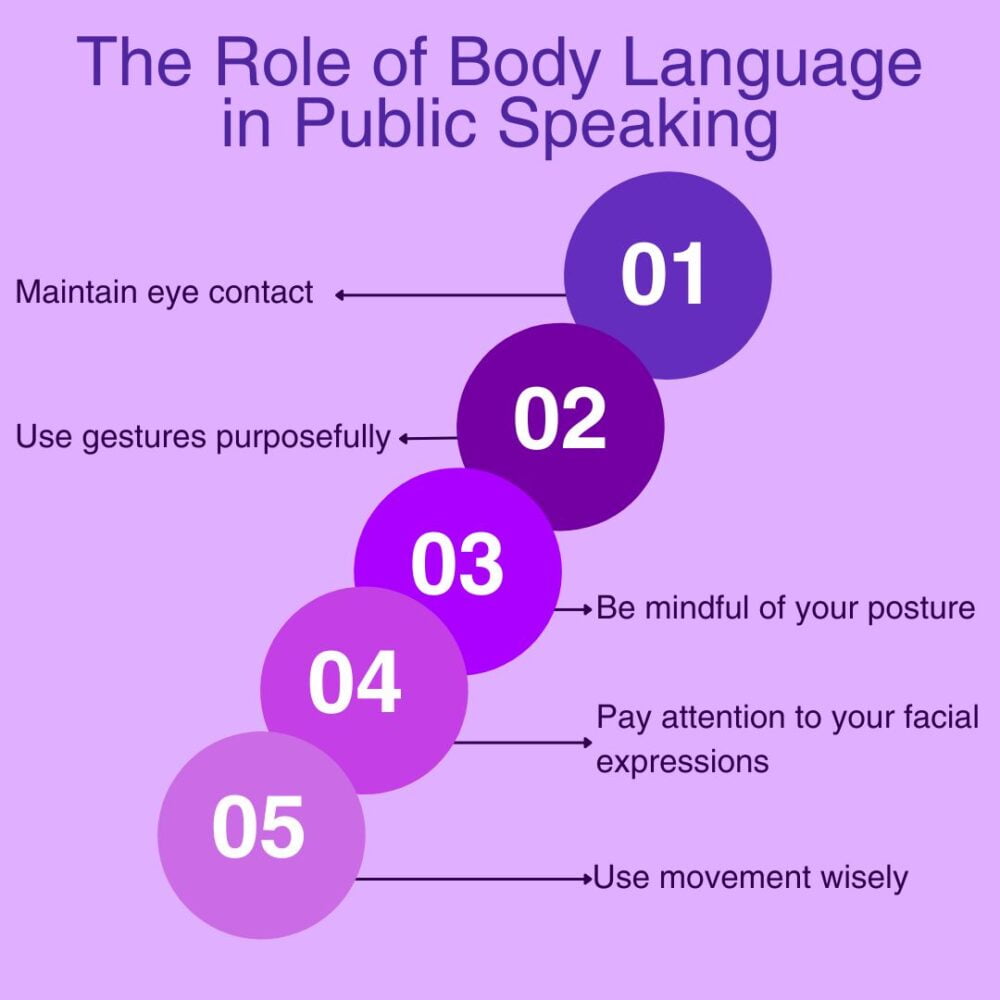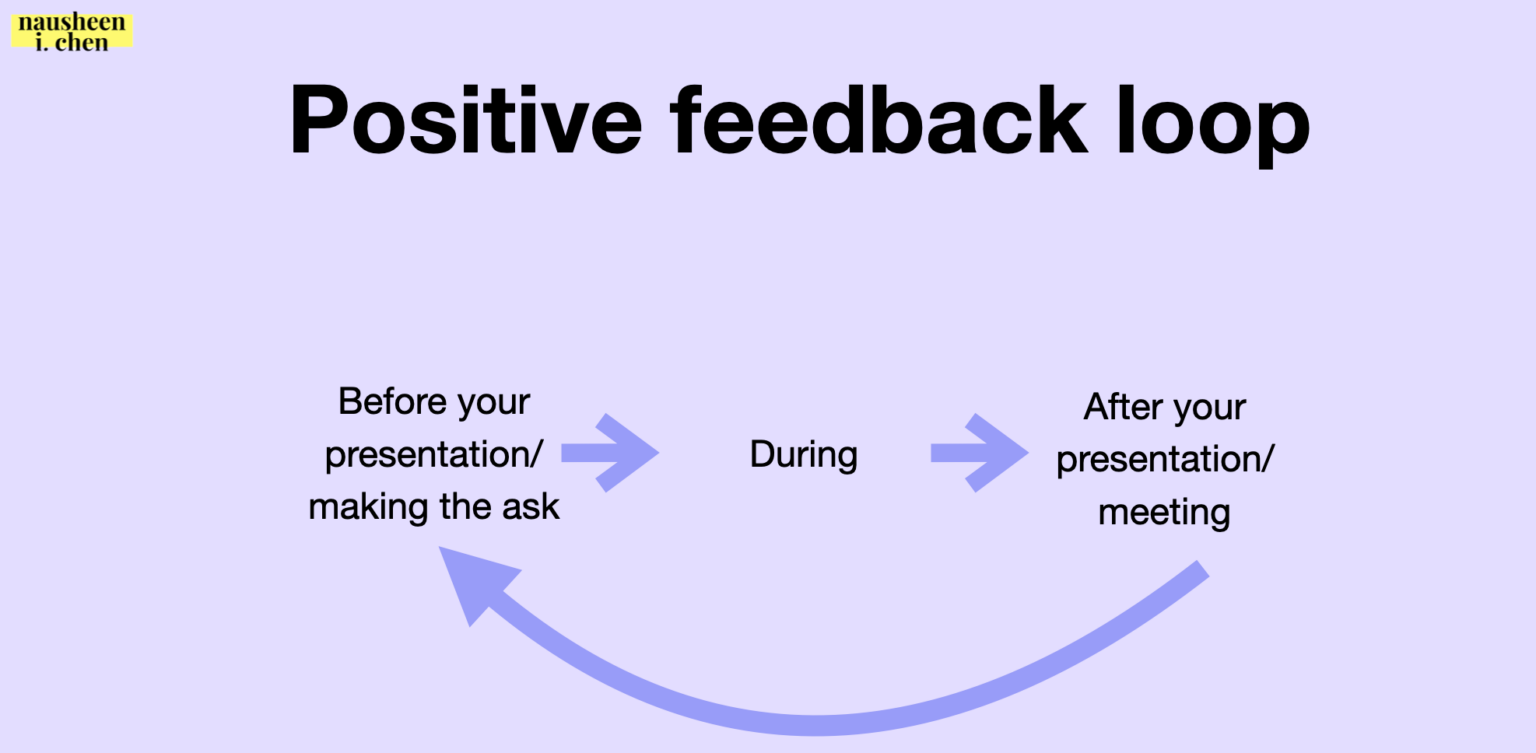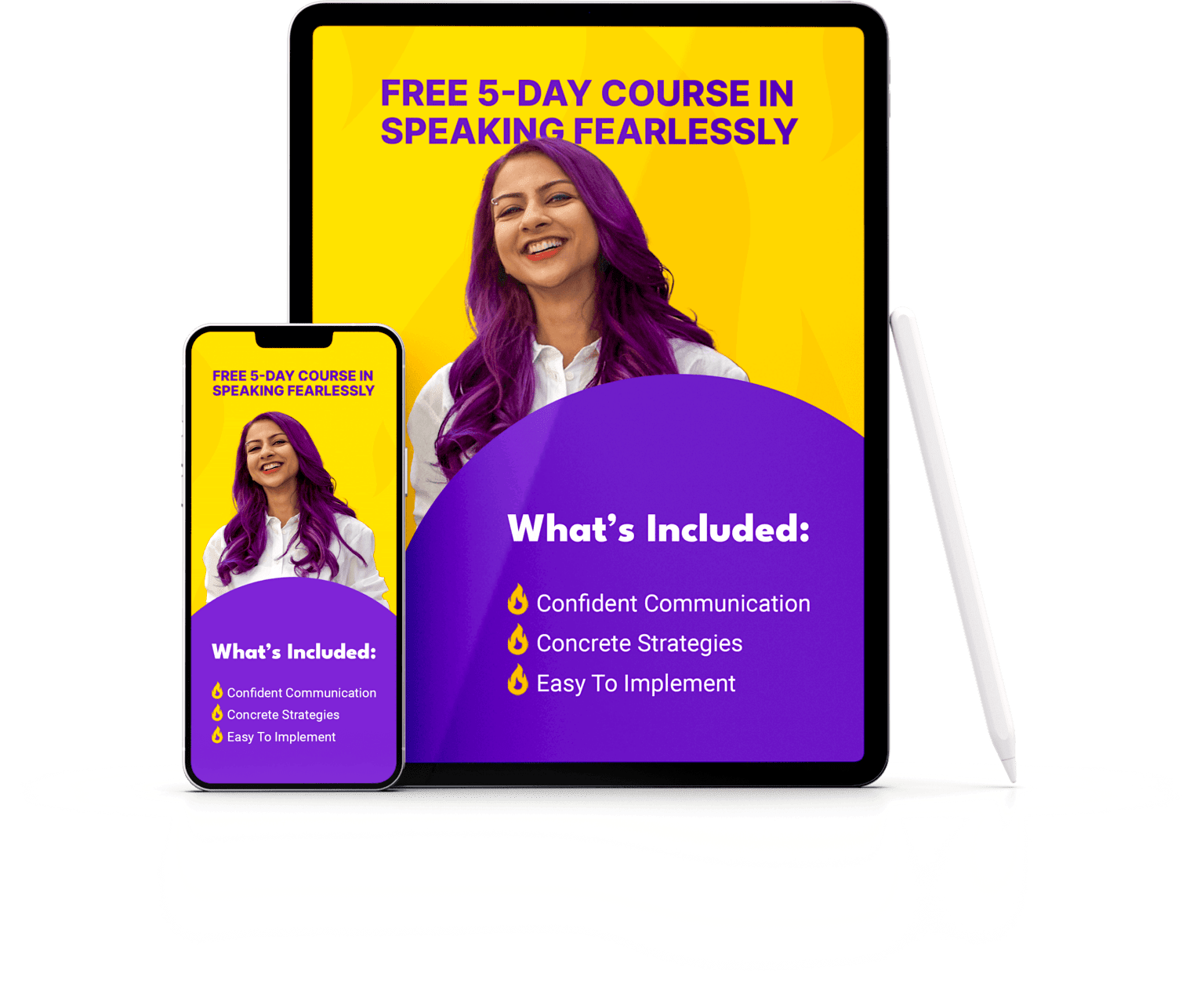As a speaking coach, I’ve seen firsthand how powerful words can be. But not everyone’s voice commands attention in a crowded room. You might wonder how some people effortlessly captivate their audience every time they speak. Well, it’s not magic or an inborn talent. You can learn how to make people listen when you speak.
Good communication is super important in our personal and work lives. Social interactions take place daily, yet many voices still fade into the background. Imagine if every time you spoke, you had everyone’s full attention.
Your presentations would be effective and productive. Your team would always take action. Your clients would be convinced to work with you. Your authority would grow with every talk, every podcast, every webinar.
Let’s make sure your voice always gets heard.
In this guide, I share with you 5 techniques to make sure people hear you and pay attention when you speak.

Table of Contents
1. How to Make Your Words Count
In this section, you’ll:
– Uncover the essence of clarity in communication.
– Explore the power of a speaker’s voice, and how tone shapes perception.

The Art of Clarity: Making Your Message Understandable
Messages, when garbled, leave audiences disengaged and disoriented. When a speaker fails to clarify their point, it’s like shooting arrows blindfolded—there’s no certainty it will hit the target.
Being direct and concise is key. Here’s how you can make your message crystal clear:
- Get straight to the point. Focus on what’s important. Your audience wants substance, not fluff.
Here’s a rule from improv that I always use: start late and end early. Start in the middle of the action- share just enough context but not too much. And stop when you’ve made your point. - Use simple language. Stop using jargon.
Speak clearly, use everyday language, and aim for your message to be understood by anyone in the room.
A lot of leaders and founders think using jargon shows they’re an insider. But the reality is: jargon alienates your audience. Instead of impressing them with your knowledge, you might just leave them feeling lost and disconnected. - Use concrete, real-life examples.
Abstract examples confuse people. Everyone loves to hear exactly how what you’re saying benefits them. The best illustration you can provide is through examples- so bring plenty of them.

The Power of Tone: How Your Voice Influences Perception
Did you know your tone can be more important than your words? A harsh voice might seem off putting, while a tone that’s too low might get your audience tuning out. A clear, assertive, confident tone shows that you’re in control and engaged.
A study conducted by the National Institute of Health discovered that the way a speaker says words doesn’t affect how well people remember them, but it does impact how they feel about those words. When words are said with emotion, they become more emotional themselves, even if it’s not intentional. This suggests that speaking with emotion can change how listeners feel, which can influence their behavior in the long run.
If you keep in mind that buyers and clients make decisions based on emotion more than logic, then infusing your tone with the right emotions becomes crucial for your growth.
Here are actionable tips to transform your tone into a powerful tool when you speak in public:
- Be intentional. A lot of speakers get lazy and monotonous when they speak. Aim to vary your tone to keep your audience engaged.
- Practice. Your voice is capable of more than you think. Use your voice like an instrument that you’re playing and aim to hit different notes.
- Cultivate positivity. A dash of positivity—appreciation, encouragement, or enthusiasm—can make your tone more appealing and influential.
Understanding clarity and tone in communication adds new layers to how you talk. When you make these aspects intentional instead of instinctual, you can make a big impact. It’s not just about speaking up; it’s about making your talk memorable.
2. Building Rapport with Your Audience
– Your audience is more than just listeners, they are integral to communication.
– Building trust can calm fears or skepticism and encourage attentive focus on your message.

Image by freeimages.com
Understanding Your Audience: The First Step to Effective Communication
Whether you’re chatting with a friend or leading a board meeting, understanding your audience is key to effective communication. This isn’t just about knowing their profession or their job title. It goes way beyond that. It means knowing their values, challenges, aspirations and their current knowledge about the subject you’re about to discuss.
But why is understanding your audience so important?
Simply put, the more you know about your audience, the better positioned you are to tailor your message in a way that resonates deeply with them. This breaks down barriers and helps your message get through easily.
Here are three tips to help you get to know your audience better:
- Understand your audience expectations especially if you’re talking to a multicultural crowd.
I had a presentation in China that didn’t go well. I missed something important about their culture. Unlike audiences I’m used to, the people there didn’t like being asked questions during the talk. They felt awkward and put on the spot. It taught me the importance of learning about their expectations before speaking. - Read the room. Adapt quickly based on the vibes.
During your presentation, take moments to pause and look at the audience. Pay attention to their body language and facial expressions to gauge their reactions.
If you notice that the audience seems disengaged, try asking a question. If you see many confused expressions, offer to slow down or repeat the information. - Research and add the local references right at the beginning of your presentation or talk.
The beginning of your presentation is important for connecting with your audience. Including something about them helps them feel understood. This builds rapport and makes them more likely to trust and listen to you attentively.
Building Trust and Credibility: The Foundation of Rapport
Once you understand your audience well, the next step is to connect with them. Trust and credibility are the bedrock of rapport. When your audience trusts you, their hearts and minds are more open to what you have to say.

What does it mean to build trust and establish credibility?
It’s important to recognize that in any interaction, your audience is evaluating your credibility. They want to know if they can trust what you’re saying and if you truly understand your subject matter. This highlights how important it is to be seen as a thought leader.
Here are five ways to build credibility with your audience and make your talk more engaging and impactful:
- Be Consistent: From your communication to your actions, maintaining consistency in your words and delivery can signal reliability to your audience.
For example, if you’re advocating for transparency, ensure your body language reflects openness and honesty. If you’re talking about something positive, remember to smile. Consistency builds trust with your audience, leading to more impactful presentations and interactions. - Showcase Expertise: Use relevant facts and examples to demonstrate your professionalism and level of understanding in the topic you’re discussing.
I advise clients to incorporate industry-specific data or success stories to showcase their understanding of the topic. This not only establishes credibility but also captivates the audience’s attention and reinforces key points. - Be Transparent: Honesty wins hearts. If your audience asks a question that you don’t know the answer to, don’t hesitate to say “I don’t know, but I will find out”.
Have you heard of the Pratfall Effect?
When highly skilled people show vulnerability, they become more likable. Social psychologist Elliot Aronson discovered this phenomenon in 1966. He suggested that people perceived as superior may appear more appealing after making a minor mistake or blunder.
3. Harnessing Non-Verbal Communication Skills
– Discover the power of body language in communication and learn how to use it effectively.
– Understand the importance of eye contact for successful communication and learn how to maintain it.

The Role of Body Language in Communication
Body language acts as the unspoken element of communication that we use to reveal our true feelings and emotions. Our gestures, facial expressions, and posture can tell our audience whether we care, are listening, and how open we are to input.
When mastered, effective body language can be a powerful tool to augment our message and build connections with our audience. An open and relaxed posture communicates confidence and willingness to interact, whereas randomly swaying or jerky gestures might indicate nervousness.

Research shows that body language is crucial in communication, making up about 60% to 70% of what we convey and understand (Mehrabian, 1981). While this research has since then been disputed, experts agree that body language can be integral to being understood.
Body language makes speaking easier by helping us convey ideas without using as many words, even if we don’t realize we’re doing it.(Cassell, Sullivan, Prevost, & Churchill, 2001; Goldin-Meadow, 2003).
Here are some effective ways to harness your body language during communication:
- Maintain a relaxed posture: Stand tall, pull your shoulders back, and ensure your hands are relaxed to show authority and confidence.
Imagine a presenter standing as still as a statue or pacing like a caged tiger on stage. Neither portrays confidence effectively. So, how can one strike the perfect balance between the two extremes?
The secret is all about balancing your body for dynamism and stability. - Use gestures mindfully: Movements should complement your verbal communication and highlight points of your speech.
For example, when emphasizing a concept, use hand gestures to visually reinforce your message and engage the audience. But don’t overdo it: Avoid excessive or distracting hand movements that can detract from your message. - Control your facial expressions: This requires self-awareness as your face can easily betray what you are thinking if you’re not careful.
For instance, if you’re discussing a serious topic but your facial expression conveys amusement or disbelief, it can undermine your credibility. Similarly, if you’re conveying excitement about a topic but your facial expression appears bored or disinterested, it can affect the audience’s engagement. It’s very important to practice self-awareness and consciously manage your facial expressions during presentations for effective communication.

The Impact of Eye Contact in Holding Attention
Eye contact, an essential part of non-verbal communication, signals interest, attention, and engagement. When engaging with your audience, it significantly increases the effectiveness of your message and helps to establish a two-way rapport.
Maintaining eye contact has a delicate balance; too much can come across as intimidating, while too little might give the impression of disinterest. Therefore, learning to manage appropriate eye contact is essential in effective communication.

Here are some tactics to improve your eye-contact skills:
- Avoid staring: Maintain a balance in making and breaking eye contact to avoid discomfort.
When presenting, I encourage speakers to strike a balance by making eye contact with different individuals throughout the audience, ensuring everyone feels included and engaged in the presentation. - Practice the 50/70 rule: Try to make eye contact 50% of the time when speaking and 70% when listening.
When delivering a talk or presentation, aim to make eye contact with your audience approximately 50% of the time. This helps convey confidence, build rapport and keep the audience engaged. Similarly, when listening to others speak, increase your eye contact to around 70% of the time. This demonstrates active listening, shows respect for the speaker and encourages open communication. By practicing the 50/70 rule, speakers can effectively connect with their audience and enhance their overall communication skills. - Use the triangle technique: Move your gaze from one eye to the other, then down to their mouth and back up to their eyes.
Imagine you’re practicing the triangle method in eye contact during a presentation. You focus too long on one person’s mouth, and suddenly they start nervously wiping their lips, wondering if there’s a rogue smudge of pizza sauce or Nutella. It’s like accidentally shining a spotlight on someone’s potential mishap—it’s uncomfortable for them and distracting for everyone else. Remember, keep it brief and keep it neutral!
Mastering non-verbal communication through effective body language and eye contact strategies enhances the impact of your presentation and engages your audience better. The effects may seem minuscule, but they can greatly change how your words are received and understood. Your body can speak volumes without uttering a single word. Remember, communication is far more than the words that pass between lips.
4. Active Listening Skills
– Active listening is a crucial part of effective communication and can help enhance your relationships with others in the professional world.
– Feedback is an underutilized tool that ensures understanding and clarity in communication. Implement these strategies for more effective dialogues.

Image by kroshka nastya on Freepik
The Importance of Active Listening in Communication
Active listening isn’t just about being silent when someone else is speaking. It involves comprehending, retaining, and responding to the information being presented to you. It is the art of fully engaging with the speaker, which not only enhances understanding but also establishes a connection that fosters trust and respect. The role of active listening in professional communication cannot be overstated.
However, honing active listening skills require constant practice. One method entails focusing on the speaker and resisting distractions. This includes maintaining eye contact and reacting appropriately to what they’re trying to communicate. Others might find it helpful to paraphrase or restate the speaker’s comments in their own words. Such a technique ensures understanding and displays interest in what’s being said.
Here are 5 key active listening techniques
- Listen without making judgments or taking sides. Try to understand the situation from the other person’s point of view.
As a speaking coach, I’ve found that one of the most effective ways to connect with others is to listen without jumping to conclusions or forming opinions. For instance, when coaching a client who was nervous about a presentation, I took the time to understand their concerns and perspective before offering advice. This approach not only helped me provide more relevant guidance but also built trust and rapport with the client. Similarly, in group workshops, encouraging participants to listen actively to each other’s viewpoints fosters a more inclusive and supportive learning environment.
- Allow the speaker to complete their thoughts without interrupting. This often involves brief moments of silence, like pausing for a few seconds, which can actually enhance communication.
During coaching sessions, I encourage clients to pause and reflect before responding, which helps them articulate their ideas more clearly. In group settings, such as workshops or meetings, I’ve observed how giving participants uninterrupted time to speak leads to a more respectful and productive exchange of ideas.
- Show focused attention during conversations. This means making eye contact, leaning in towards the speaker to show interest, and responding naturally with a smile or laughter when appropriate.
I encourage clients to maintain eye contact and lean in towards the speaker to show engagement. Additionally, I often share personal anecdotes or light humor with a smile to create a relaxed and supportive atmosphere. In group workshops, I’ve observed how participants who actively listen and respond with genuine interest contribute to a more dynamic and interactive discussion.
- Give a short recap to confirm that you’ve listened and understood what was said.
I often summarize key points raised by clients to ensure mutual understanding and clarity moving forward. Similarly, in group discussions or meetings, I’ve observed how providing a quick summary of important points helps reinforce understanding and keeps everyone on the same page.
- Ask questions if you don’t understand what the speaker is saying, especially if you’re trying to understand the main point.
During coaching sessions, I encourage clients to ask clarifying questions to ensure they fully understand the concepts being discussed. Similarly, in group settings, I’ve observed how asking questions can lead to more insightful discussions and a deeper understanding of the topic at hand.
“The biggest communication problem is we do not listen to understand. We listen to reply.” —Stephen R. Covey, author of The 7 Habits of Highly Effective People.
The Power of Feedback: Ensuring Your Message is Understood
According to Ken Blanchard, “Feedback is the breakfast of champions.” – a quote often aped but rarely implemented to its full potential in professional settings.

I always include the positive feedback loop in our speaker’s toolkit. Feedback is crucial for reaching your full potential in public speaking. Honest and focused feedback helps you improve and grow as a more impactful speaker.
5. Persuasive Speaking Techniques: Influencing Your Audience
– Unleash your persuasive power to make your words hit the mark.
– Engage your audience through immersive storytelling.
– Master techniques for a dynamic dialogue that draws your listeners in and compels them to act.
The Art of Persuasion: Making Your Words Matter
Being able to persuade effectively is crucial for engaging communication. Your perspective becomes stronger, your ideas gain momentum, and your words have a lasting impact beyond the stage or meeting room.
You won’t turn into a silver-tongued charismatic speaker overnight, but you can start practicing persuasive techniques immediately.
Impactful presentations aim to persuade the audience and influence their thinking. When you don’t deliver a presentation effectively, you lose the chance to leave a lasting impression, sway opinions and inspire action. Entrepreneurs who excel at influencing others build better connections, attract more customers, and establish their reputation as thought leaders more quickly.

Image by partystock on Freepik
Tips for Persuasive Speaking
- Use words that influence perception
For example:
Instead of saying “This is bad”, say “This is what we can do to improve”.
Instead of saying “This isn’t the way things are done”, say “Here’s another solution”.
Instead of saying “This will never work”, say “Let’s give it our best shot”. - Use metaphors to highlight the main points of your presentation.
By comparing it to something familiar or easily understood, your audience can easily grasp complex ideas. This leads to more engagement and encourages creativity. - Use vocal mirrors to match those of the person you’re speaking to.
This includes matching your tone, pitch and pace. If you can mirror these vocal characteristics, you will be able to establish rapport with your audience. They will feel more engaged in your talk or presentation.
The Power of Storytelling: Engaging Your Audience
Storytelling is a superpower in public speaking. It can capture an audience’s attention, evoke emotions, or help complex ideas sink in. Stories, anecdotes, or vivid examples can spark curiosity and keep your listeners hooked till the conclusion.
Imagine a business presentation. Raw data and technicalities could put your audience to sleep. But spin that information into a compelling tale of overcoming challenges or chasing victories, and see the room sit up and engage.
Three Crucial Tips to Incorporate Storytelling in Your Communication
- The Hero’s Journey
It typically involves the hero facing challenges, meeting allies, confronting villains, and ultimately undergoing personal transformation. This structure, popularized by Joseph Campbell, is found in many myths, legends, and modern narratives, resonating with audiences because it reflects universal themes of growth, struggle, and triumph.
- Visual Storytelling with Imagery
Using visuals in presentations is common. But, are you using them right?
Instead of saying your team is efficient, show a picture of a relay team winning a race and ask the audience to link that image to your team.
- Emotional Appeal: The Heart of Your Story
Use emotions in your storytelling. Whether it’s happiness, sadness, excitement, or empathy, emotions help you connect more deeply with your audience.
Instead of being in “I’m going to inform them” mode, aim to be in “I’m going to appeal to their emotions” mode.
By understanding and implementing these persuasive techniques and embracing the power of storytelling, you can use the power of influential communication and leave your audience hanging on your every word. The next step is to put these techniques into practice. But remember, listener engagement isn’t just about your skills — it’s about connecting, comprehending, and contributing to shared understanding.
Your Speaking Superpower
Reading body language, leveraging the power of your voice, improving your language skills, plotting a roadmap, and nurturing your authenticity are minute details that will escalate you from an unintentional speaker to a captivating one.
Captivating an audience isn’t just about luck or natural charm. It’s about getting better at speaking by using smart, proven techniques.
Your next talk, meeting or podcast is the perfect testing ground. Aim to incorporate one technique each time and evaluate its effectiveness for your audience.
Want to upgrade your speaking skills? Let’s talk.



